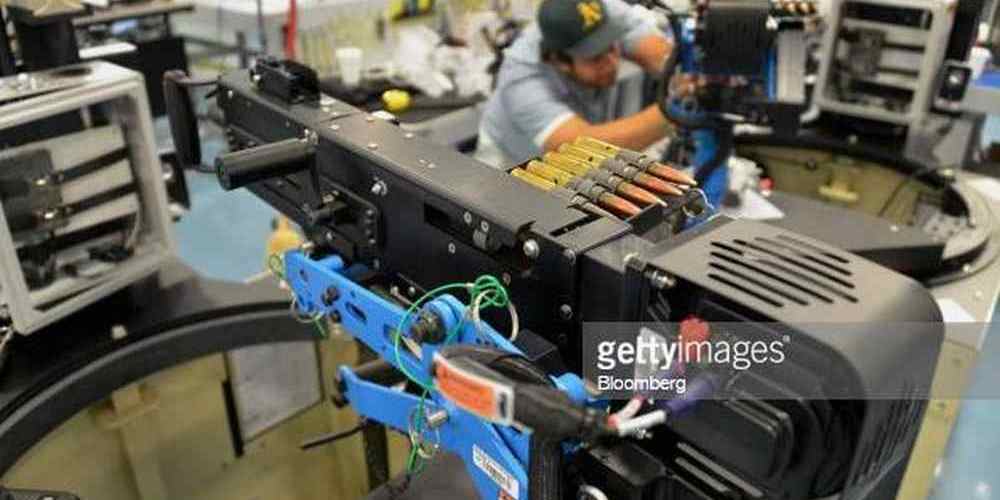“Extractor Examination: Ensuring accurate and reliable case extraction every time.”
The Importance of Proper Training for Extractor Examination
When it comes to digital forensics, one of the most crucial steps in the investigation process is the extraction of data from electronic devices. This process, known as extractor examination, involves using specialized tools and techniques to retrieve information from computers, smartphones, and other digital devices. The accuracy and reliability of the extracted data can have a significant impact on the outcome of a case, making proper training for extractor examination essential.
Proper training for extractor examination is important for several reasons. First and foremost, it ensures that examiners are able to use the tools and techniques effectively and efficiently. Extracting data from electronic devices can be a complex and time-consuming process, requiring a deep understanding of the underlying technology and the ability to navigate through various file systems and encryption methods. Without proper training, examiners may struggle to extract data accurately, leading to potential errors or omissions that could compromise the integrity of the investigation.
In addition to technical proficiency, proper training for extractor examination also helps examiners understand the legal and ethical considerations that come with handling digital evidence. Digital forensics is a highly regulated field, with strict guidelines and protocols that must be followed to ensure the admissibility of evidence in court. Examiners must be aware of these guidelines and understand how to properly document their findings to ensure that the evidence is not compromised or invalidated.
Furthermore, proper training for extractor examination helps examiners stay up-to-date on the latest tools and techniques in the field. Technology is constantly evolving, and new devices and software are released regularly, each with its own unique challenges and complexities. By staying current with the latest developments in digital forensics, examiners can ensure that they are able to effectively extract data from a wide range of devices and platforms, regardless of how advanced or secure they may be.
One of the best ways to ensure that examiners receive proper training for extractor examination is through certification programs and professional development courses. These programs provide examiners with the knowledge and skills they need to effectively extract data from electronic devices, as well as the opportunity to network with other professionals in the field and stay current with the latest trends and developments.
In addition to formal training programs, organizations can also provide on-the-job training and mentorship opportunities for examiners to further enhance their skills and knowledge. By pairing less experienced examiners with more seasoned professionals, organizations can help ensure that their examiners are able to learn from each other and develop the expertise needed to handle even the most challenging extraction tasks.
Ultimately, proper training for extractor examination is essential for ensuring the reliability and accuracy of digital evidence in criminal investigations. By investing in the training and development of their examiners, organizations can help ensure that they have the skills and knowledge needed to extract data effectively and ethically, ultimately leading to more successful outcomes in their cases.
Common Challenges Faced During Case Extraction
Case extraction is a crucial step in the eDiscovery process, as it involves identifying and collecting relevant data for legal proceedings. However, this process can be fraught with challenges that can impact the reliability and accuracy of the extracted information. In this article, we will explore some common challenges faced during case extraction and discuss strategies to overcome them.

One of the most common challenges during case extraction is the sheer volume of data that needs to be processed. With the proliferation of digital information, organizations are often inundated with vast amounts of data that need to be sifted through to identify relevant evidence. This can be a time-consuming and labor-intensive process, requiring sophisticated tools and techniques to efficiently extract the necessary information.
Another challenge is ensuring the integrity and authenticity of the extracted data. In legal proceedings, it is essential that the extracted evidence is admissible in court and has not been tampered with or altered in any way. This requires strict adherence to chain of custody protocols and the use of forensic tools to preserve the integrity of the data throughout the extraction process.
Furthermore, the complexity of modern data sources can pose a significant challenge during case extraction. With data stored in a variety of formats and locations, including emails, social media, cloud storage, and mobile devices, extracting relevant information can be a daunting task. It is essential to have a comprehensive understanding of the different data sources and the tools required to extract information from each source effectively.
In addition to technical challenges, legal and regulatory considerations can also impact the case extraction process. Organizations must comply with data privacy laws and regulations when extracting data for legal proceedings, such as the General Data Protection Regulation (GDPR) in Europe or the Health Insurance Portability and Accountability Act (HIPAA) in the United States. Failure to comply with these regulations can result in severe penalties and legal consequences.
To overcome these challenges, organizations can implement best practices and strategies to ensure reliable case extraction. One approach is to establish clear policies and procedures for data extraction, outlining the steps to be followed and the tools to be used. This can help streamline the extraction process and ensure consistency and accuracy in the extracted data.
Another strategy is to leverage advanced technology and tools for case extraction. Automated data extraction tools can help organizations quickly and efficiently extract relevant information from a variety of data sources, reducing the time and effort required for manual extraction. These tools can also help ensure the integrity and authenticity of the extracted data, providing a reliable foundation for legal proceedings.
Collaboration between legal and IT teams is also essential for successful case extraction. By working together, these teams can ensure that the extraction process meets legal requirements and is conducted in a manner that preserves the integrity of the data. This collaboration can help organizations navigate the complex legal and technical challenges of case extraction and ensure a successful outcome.
In conclusion, case extraction is a critical step in the eDiscovery process, but it is not without its challenges. By understanding and addressing these challenges, organizations can ensure reliable and accurate extraction of data for legal proceedings. By implementing best practices, leveraging advanced technology, and fostering collaboration between legal and IT teams, organizations can overcome these challenges and extract relevant information efficiently and effectively.
Best Practices for Ensuring Accuracy in Extractor Examination
When it comes to digital forensics, one of the most crucial steps in the investigation process is the extraction of data from electronic devices. This process, known as extractor examination, involves using specialized tools and techniques to retrieve information from computers, smartphones, and other digital devices. The accuracy and reliability of the extracted data are essential for building a strong case and ensuring that justice is served.
To ensure that extractor examination is conducted accurately and reliably, forensic examiners must follow best practices and adhere to strict guidelines. One of the first steps in the process is to carefully document the extraction process, including the tools and techniques used, the date and time of the extraction, and any other relevant information. This documentation is essential for maintaining the chain of custody and ensuring that the extracted data is admissible in court.
Another important aspect of extractor examination is to use reliable and up-to-date tools and software. Forensic examiners must stay current with the latest developments in digital forensics and use tools that are trusted and widely accepted in the field. Using outdated or unreliable tools can lead to errors in the extraction process and compromise the integrity of the evidence.
In addition to using reliable tools, forensic examiners must also be thorough and methodical in their approach to extractor examination. This includes conducting a comprehensive analysis of the device, identifying all relevant data sources, and ensuring that all relevant information is extracted. Failure to extract all relevant data can result in crucial evidence being overlooked or missed, potentially jeopardizing the outcome of the case.
Forensic examiners must also be mindful of potential challenges and obstacles that may arise during the extraction process. This includes dealing with encrypted or password-protected data, navigating complex file systems, and overcoming technical limitations of the device. In some cases, forensic examiners may need to work closely with other experts, such as computer programmers or data recovery specialists, to overcome these challenges and extract the necessary information.
Throughout the extraction process, forensic examiners must also be diligent in maintaining the integrity of the extracted data. This includes ensuring that the data is not altered or tampered with during the extraction process, and that proper safeguards are in place to prevent unauthorized access or modification. Any changes to the extracted data must be carefully documented and explained to ensure that the integrity of the evidence is preserved.
Finally, forensic examiners must be prepared to testify in court about the extraction process and the reliability of the extracted data. This may involve providing detailed explanations of the tools and techniques used, demonstrating the accuracy of the extraction process, and defending the integrity of the evidence. Forensic examiners must be able to communicate complex technical information in a clear and understandable manner, and be prepared to answer questions from judges, juries, and legal counsel.
In conclusion, extractor examination is a critical step in the digital forensics process, and it is essential that forensic examiners follow best practices to ensure the accuracy and reliability of the extracted data. By documenting the extraction process, using reliable tools, being thorough and methodical in their approach, overcoming challenges, maintaining data integrity, and being prepared to testify in court, forensic examiners can help ensure that justice is served and that the truth is revealed.
Understanding the Role of Extractor Examination in Legal Proceedings
In the world of legal proceedings, the role of extractor examination is crucial in ensuring reliable case extraction. Extractor examination involves the careful analysis and evaluation of digital evidence to extract relevant information that can be used in court. This process requires a high level of expertise and attention to detail to ensure that the extracted data is accurate and admissible in court.
One of the key aspects of extractor examination is the preservation of evidence. It is essential to ensure that the digital evidence is collected and stored in a secure and tamper-proof manner to maintain its integrity. This involves creating a forensic image of the data, which is an exact copy of the original evidence that can be used for analysis without altering the original data.
Once the evidence has been preserved, the extractor examination process begins. This involves analyzing the data to extract relevant information that can be used in the legal proceedings. This can include recovering deleted files, identifying timestamps, and analyzing communication records, among other things. The goal is to extract as much relevant information as possible to build a strong case.
During the extractor examination process, it is important to follow strict protocols and procedures to ensure the integrity of the evidence. This includes documenting every step of the examination process, maintaining a chain of custody for the evidence, and using specialized tools and software to extract and analyze the data. By following these procedures, extractor examiners can ensure that the extracted data is reliable and admissible in court.
One of the challenges of extractor examination is dealing with encrypted or password-protected data. In these cases, extractor examiners may need to use specialized techniques to bypass encryption or recover passwords to access the data. This requires a high level of expertise and knowledge of digital forensics to ensure that the data can be extracted without compromising its integrity.
Another important aspect of extractor examination is ensuring that the extracted data is presented in a clear and understandable manner. This involves organizing the data in a logical format, creating reports that summarize the findings, and providing expert testimony in court if necessary. By presenting the extracted data effectively, extractor examiners can help strengthen the case and provide valuable evidence to support legal proceedings.
In conclusion, extractor examination plays a crucial role in legal proceedings by ensuring the reliable extraction of digital evidence. By following strict protocols and procedures, extractor examiners can preserve the integrity of the evidence and extract relevant information that can be used in court. With their expertise and attention to detail, extractor examiners help build strong cases and provide valuable evidence to support legal proceedings.
Emerging Technologies in Extractor Examination for Improved Efficiency
Extractor examination is a crucial step in the forensic investigation process, as it involves the extraction of digital evidence from various devices such as computers, smartphones, and tablets. This process is essential for uncovering valuable information that can be used in legal proceedings. With the advancement of technology, there are emerging technologies in extractor examination that are aimed at improving efficiency and reliability in the extraction process.
One of the key technologies in extractor examination is the use of advanced software tools that are specifically designed for extracting digital evidence from devices. These tools are equipped with powerful algorithms that can scan through the device’s storage and retrieve relevant data such as emails, text messages, photos, and videos. By using these tools, forensic examiners can quickly and accurately extract evidence without the risk of altering or damaging the original data.
Another emerging technology in extractor examination is the use of hardware-based solutions that are designed to extract data directly from the device’s memory chips. These solutions are particularly useful in cases where the device’s operating system is corrupted or inaccessible. By bypassing the operating system, forensic examiners can extract data directly from the memory chips, ensuring that no data is lost or altered during the extraction process.
In addition to software and hardware-based solutions, there are also emerging technologies in extractor examination that focus on improving the efficiency of the extraction process. One such technology is the use of automation tools that can streamline the extraction process by automatically scanning and extracting data from multiple devices simultaneously. This not only saves time but also reduces the risk of human error in the extraction process.
Furthermore, there are emerging technologies in extractor examination that focus on ensuring the reliability of the extracted data. One such technology is the use of validation tools that can verify the integrity of the extracted data by comparing it to the original data on the device. This helps forensic examiners ensure that the extracted data is accurate and admissible in court.
Overall, emerging technologies in extractor examination are revolutionizing the way digital evidence is extracted and analyzed in forensic investigations. By using advanced software and hardware solutions, forensic examiners can extract data quickly and accurately from a wide range of devices. Additionally, automation tools and validation tools are improving the efficiency and reliability of the extraction process, ensuring that the extracted data is reliable and admissible in court.
In conclusion, extractor examination is a critical step in forensic investigations, and emerging technologies are playing a key role in improving efficiency and reliability in the extraction process. By leveraging advanced software and hardware solutions, forensic examiners can extract data quickly and accurately from devices, while automation and validation tools help streamline the extraction process and ensure the reliability of the extracted data. As technology continues to advance, we can expect to see even more innovations in extractor examination that will further enhance the capabilities of forensic examiners in uncovering valuable digital evidence.







